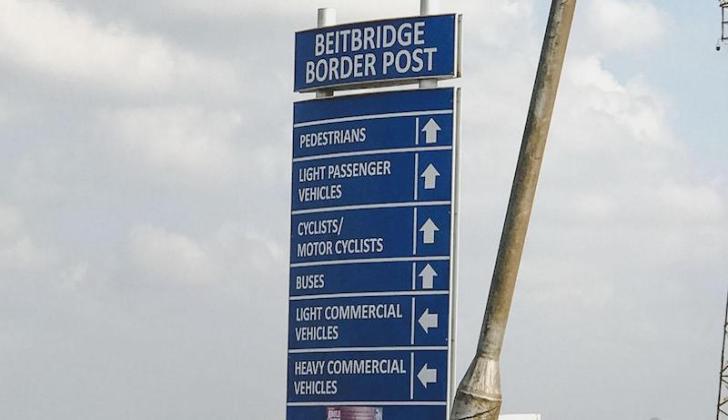News / National
South Africa to deploy drones to strengthen Beitbridge border?
13 Dec 2024 at 12:55hrs |
0 Views

South Africa has announced plans to introduce drones under its Border Management Authority (BMA) to monitor and secure its borders, which have long been criticized as “porous." The move is aimed at enhancing surveillance and addressing cross-border challenges such as smuggling, illegal immigration, and organized crime.
As Africa's largest and most advanced economy, South Africa attracts millions of immigrants from across the continent and beyond. Among them are millions of Zimbabweans who have sought refuge in their southern neighbor due to economic and political instability at home.
The introduction of drones is part of broader efforts to address the strain on South Africa's border management systems.
Home Affairs official Leon Schreiber highlighted the importance of drone technology in tightening border controls. “Drones will help us to efficiently monitor vast and difficult-to-patrol areas, ensuring that our borders are more secure," he said.
The drones will complement existing measures under the BMA, which was established to centralize border security functions and improve coordination among various agencies.
South Africa's borders, particularly those shared with Zimbabwe, Mozambique, and other neighboring countries, have been described as a weak link in the fight against smuggling, human trafficking, and illegal crossings. The Limpopo River border, for example, sees regular activity by smugglers and undocumented migrants, especially during the dry season.
While border security has been bolstered by initiatives such as Operation Corona by the South African National Defence Force (SANDF), challenges persist due to inadequate infrastructure and limited resources.
The deployment of drones is seen as a game-changer in border management, providing real-time monitoring capabilities across difficult terrains. Officials believe the technology will help detect and deter illegal activities while ensuring better resource allocation for on-ground patrols.
The introduction of drones under the BMA is part of South Africa's broader strategy to modernize its border security framework. The initiative underscores the country's commitment to addressing migration challenges and ensuring the safety and stability of its borders in the face of increasing pressures.
As implementation begins, stakeholders will closely watch how effective the new measures are in addressing long-standing border security issues.
As Africa's largest and most advanced economy, South Africa attracts millions of immigrants from across the continent and beyond. Among them are millions of Zimbabweans who have sought refuge in their southern neighbor due to economic and political instability at home.
The introduction of drones is part of broader efforts to address the strain on South Africa's border management systems.
Home Affairs official Leon Schreiber highlighted the importance of drone technology in tightening border controls. “Drones will help us to efficiently monitor vast and difficult-to-patrol areas, ensuring that our borders are more secure," he said.
The drones will complement existing measures under the BMA, which was established to centralize border security functions and improve coordination among various agencies.
While border security has been bolstered by initiatives such as Operation Corona by the South African National Defence Force (SANDF), challenges persist due to inadequate infrastructure and limited resources.
The deployment of drones is seen as a game-changer in border management, providing real-time monitoring capabilities across difficult terrains. Officials believe the technology will help detect and deter illegal activities while ensuring better resource allocation for on-ground patrols.
The introduction of drones under the BMA is part of South Africa's broader strategy to modernize its border security framework. The initiative underscores the country's commitment to addressing migration challenges and ensuring the safety and stability of its borders in the face of increasing pressures.
As implementation begins, stakeholders will closely watch how effective the new measures are in addressing long-standing border security issues.
Source - online
Join the discussion
Loading comments…




















